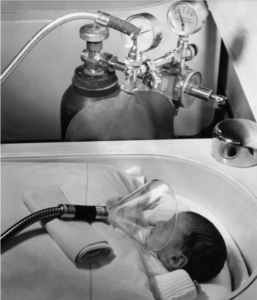Any way you look at it, the field of pediatrics has grown in exponentially ways. It didn’t even come into its own as a distinct branch of modern medicine until the 1930s.1 Even then, it took several more decades before the first pediatric subspecialty — cardiology — received its own board recognition in the 1960s.2

The years since then have been full of medical innovations that have saved the lives of countless children. As the end of this year approaches, here’s a look back at some of most significant technological advancements over the past 10 years.
3D Printed Hearts
3D printing is becoming the next frontier of organ-transplant medicine. For instance, this year, a soft silicon-made, 3D printed heart beat for about 30 minutes in a Zurich lab.3
Although 3D printing is still far from creating a full replacement for a human heart, this technology has significantly improved the outcomes of heart surgeries for children.
For example, cardiologists and surgeons at Children’s Nebraska use printed replicas of patient hearts as models to help prepare for surgery.4 Using MRI and CT scan images, Children’s physicians create models and enlarge them to study a patient’s heart defects more closely.
Surgeons then have the opportunity to practice on these printed models, which leads to more precision during surgery and fewer complications for children afterward.
The continued improvement of 3D printing technology offers a glimpse at an even brighter future for the smallest cardiology patients.
Gene Therapy For Leukemia
Even though leukemia is the most common type of cancer in children and teens, its exact causes have eluded researchers.5 However, at least some types have been linked to gene mutations.6
The treatment “reprograms” the DNA of a patient’s own T-cells8 to recognize cancer cells. These reprogrammed cells are then infused back into the patient’s body. In a clinical trial with 88 patients, 73 went into remission within 3 months.
Physicians and researchers saw the advance as a new class of cancer therapy that might eventually be adapted for all cancer patients.
Bridge-Enhanced ACL Repair (BEAR)
While ACL tears are some of the most common sports injuries,9 they’re notorious for the time and effort they require for full healing. Reconstruction surgery10 usually requires taking grafts from other parts of a patient’s tendons, and recovery typically takes several months.
For the past 2 years, Boston Children’s Hospital has been using an alternate approach that appears to have great promise. Rather than relying on tendon grafting, the new surgery11 uses a sponge bridge to connect the torn ends of the patient’s ACL. In about 6 to 8 weeks, the ligament grows back and replaces the sponge.
The full potential of this new surgery is still being studied,12 but it has sparked interest among physicians and patients alike. In addition to a quicker recovery, the surgery is less invasive than traditional ACL repair and has the potential to become a game-changer for young athletes.
[INSERT ALSO READ]
- The ECHO Grant: Getting To The Root of Childhood Obesity
- What Do Healthcare Consumers Value Most? 4 Key Insights